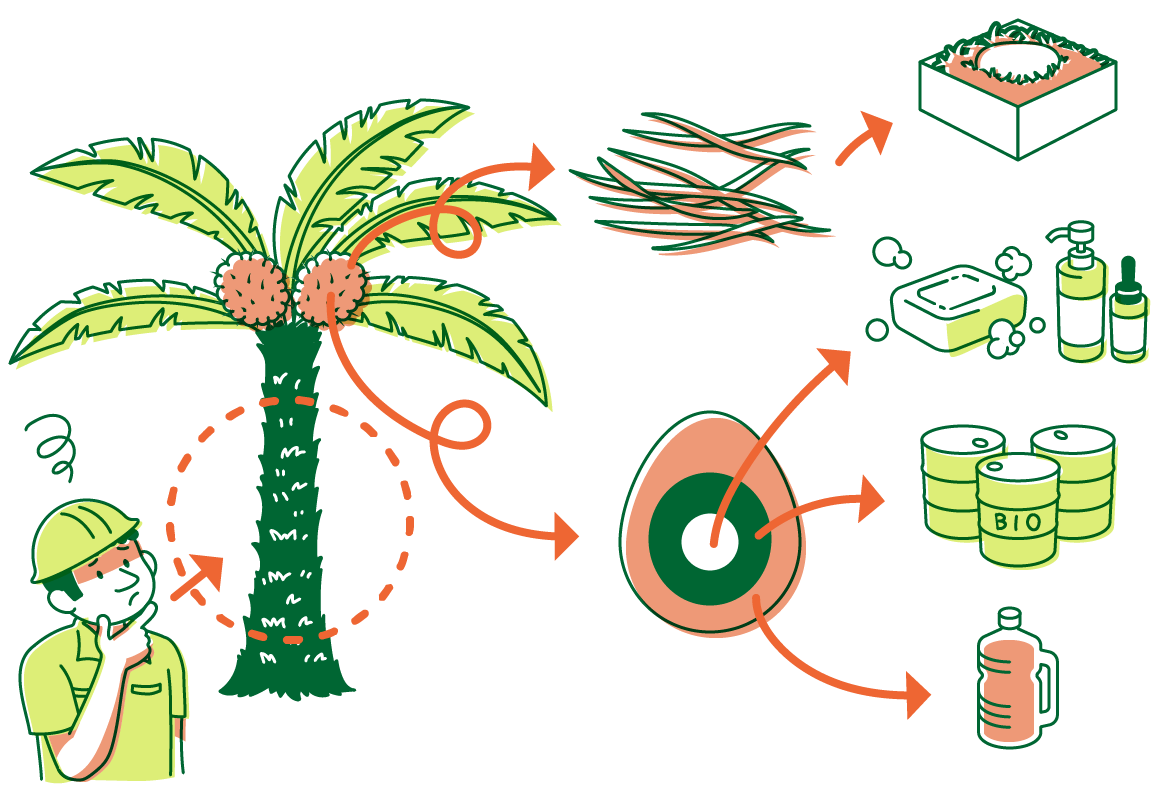
Oil palm is planted to squeeze palm oil in Malaysia,Indonesia and so on. The fats and oils found in fruits are used for soap and edible vegetable oil, which is the first rank among vegetable oils in the world.
Oil palm was brought to Malaysia in the 1900s and planted in a vast plantation. As a result, it became a production country accounting for 51% of world production, but the infulence on the environment as conpensation is very large, and it is a problem now.
Oil palm begins to bear fruit in 3 years, and palm oil can be squeezed. But the amount of fruit decreases with time, so in order to stably extract palm oil in 25-30 years oil palm must be cut and replanted.
Originally fruit and empty fruit bunches are valuable as resources, but the oil palm trunk (Oil Palm Trunk = OPT) is not strong enough to be used as a building material because of its low strength. There remains a problem with the processing method because of no use OPT after felling.
For this reason, the plantation has become a state that is full of OPT which has been cut down. Currently, Palmholz is researching how to use it.
In order to squeeze palm oil, it is necessary to plant oil palm, so it is inevitable to cut down oil palm that is not worth it. This is a problem for oil palm plantations.
If the use of oil palm trunks (OPT) can be realized, it will become a new value for oil palm plantations and contribute to environmental problems caused by felling.
So we started researching how to use OPT. The research was carried out with the formation of “TEAM Palmholz” with about 20 experts.
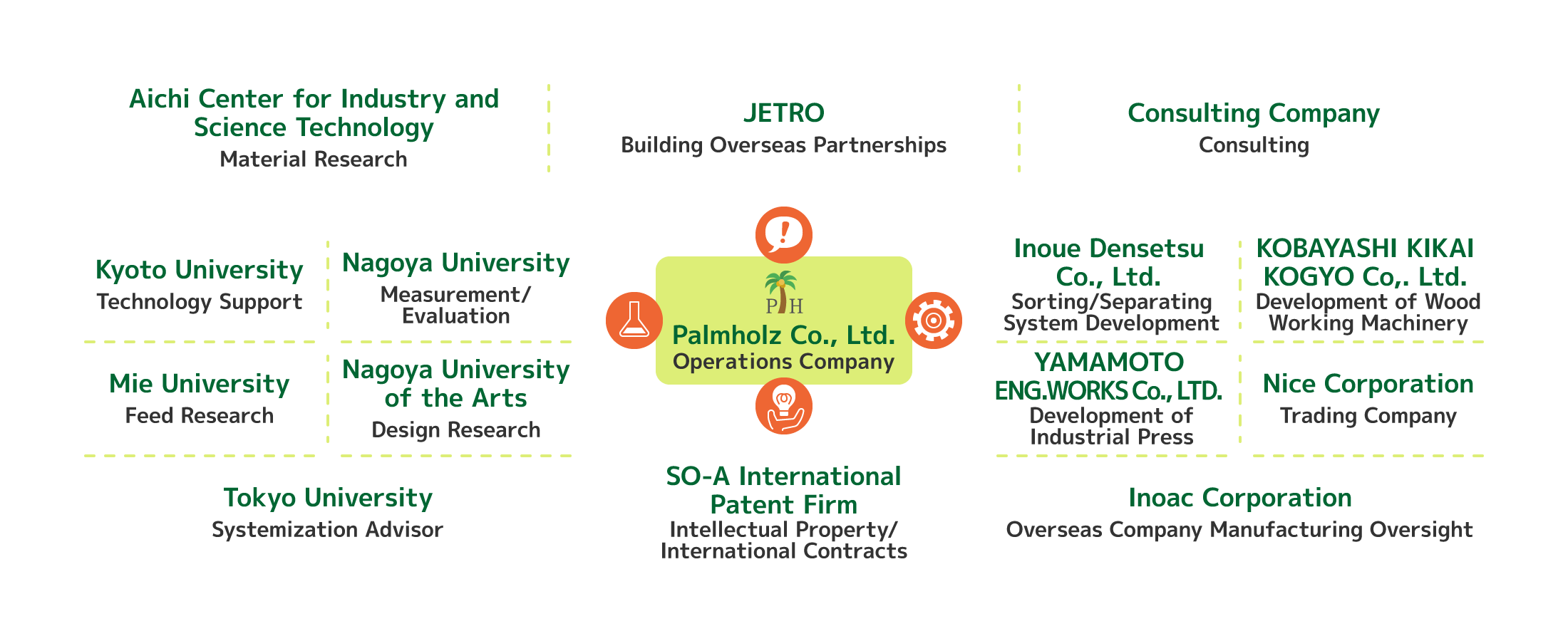
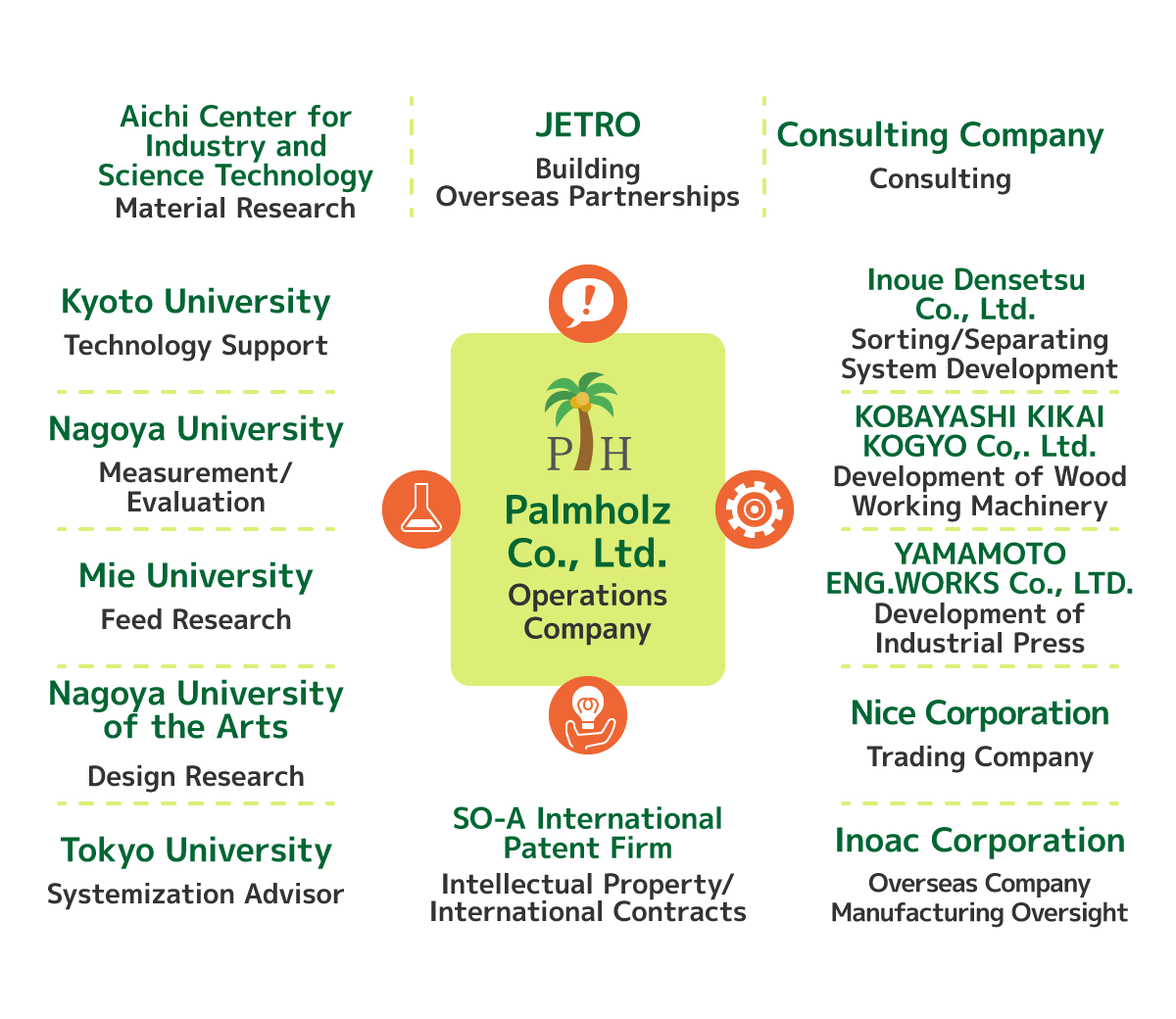
Team Palmholz is a group of people who have been providing joint development and technical guidance to Palmholz since its predecessor companies, Mywood Co., Ltd. and Mywood Two Co., Ltd.
As a study of the utilization of OPT, it was assumed that the compression technology of the Sugi could be applied. Compression technology was originally developed to increase the strength of cedar(Sugi), which was planted in Japan after the war and utilization after logging was a problem, and is a technology patented by our predecessor companies.
Based on that assumption, we started research on compression of OPT. OPT, which has completely different properties from cedar, struggled to adjust the weight of pressurization, but unlike cedar, the substance extracted from OPT replaces the adhesive, and wooden products are produced without using petrochemical adhesive. It turned out that there is a merit that it can be made.
After repeated research, we succeeded in transforming OPT into a wooden product using compression technology.

OPT has been reborn as a valuable resource as a high-value-added wooden product that does not use petrochemical substances by compression technology, but could it really become a valuable resource? Therefore, in order to verify it, we conducted an experiment by model construction in Japan.
As a result, we were able to obtain the result of model construction that it can be used in the same way as other building materials. It has been proven that OPT has been transformed into a valuable resource.
Here are some examples of construction using OPT.
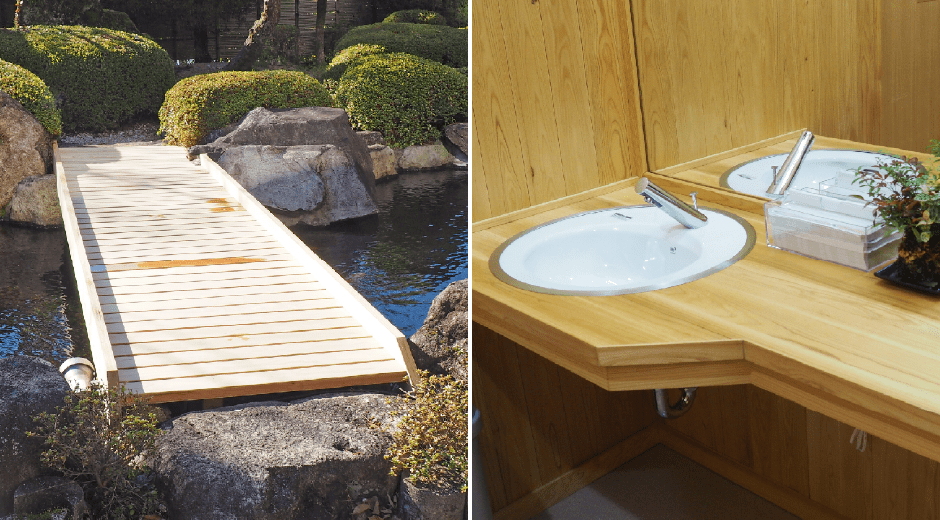
Using compressed Japanese cypress as a surface for OPT, the surface retains the feeling of the Japanese cypress and the OPT is bonded to it as a single piece, creating the luxurious feeling of solid Japanese cypress. It is used in the bridge in the inn’s garden and indoor washstand. As an outdoor bridge over water, this location is the worst conditions for wooden products, but already it has seen three years of issue-free use.
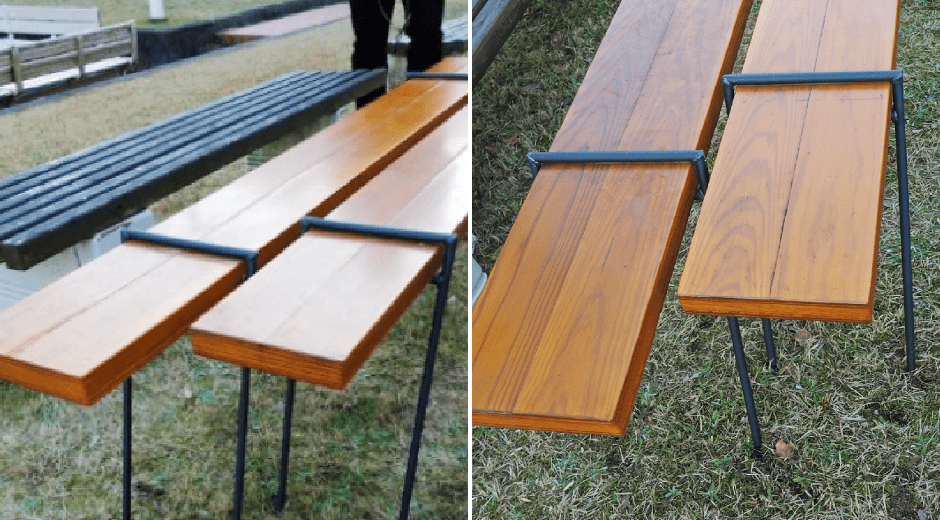
Using OPT surfaced with compressed cedar creates the feeling of cedar on the surface. The cores of benches installed outside the university use OPT. This is different from using 100% cedar wood increasing strength and reducing cost by half.
These case studies are not OPT but use the same technology and can be used for OPT as well.
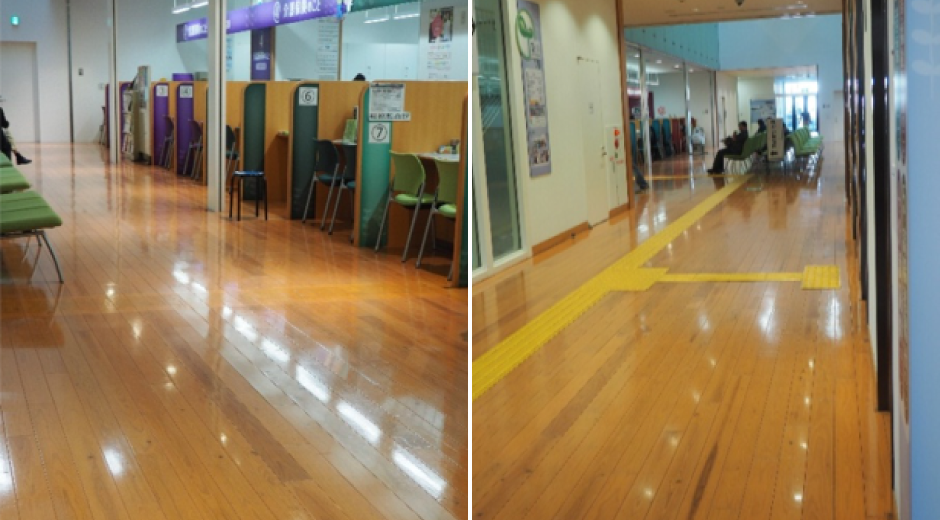
Using compressed cedar as a surface material creates the feeling of cedar on the surface. This is different from using 100% cedar increasing wear durability strength threefold and reducing cost by half.
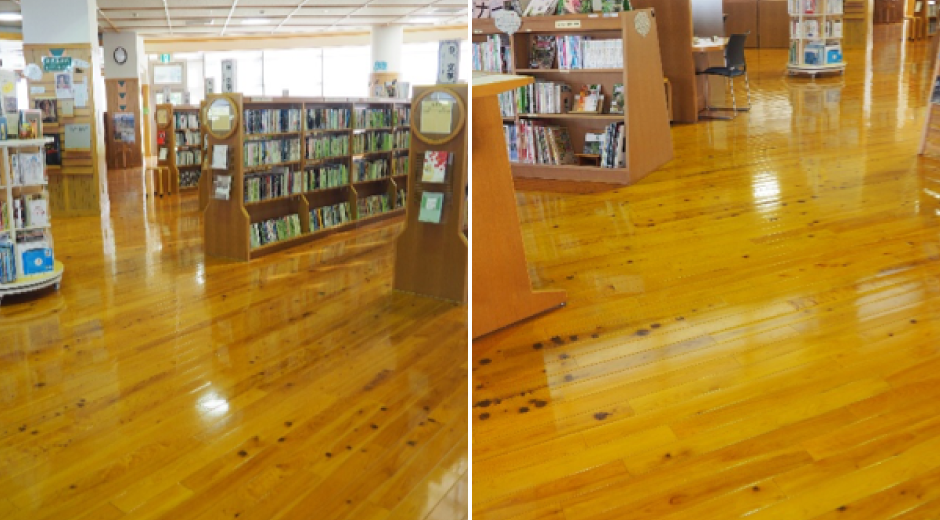
Using compressed cedar as a surface material creates the feeling of cedar on the surface and triples wear resistance. This is different from using 100% cedar increasing wear strength and reducing cost by half.
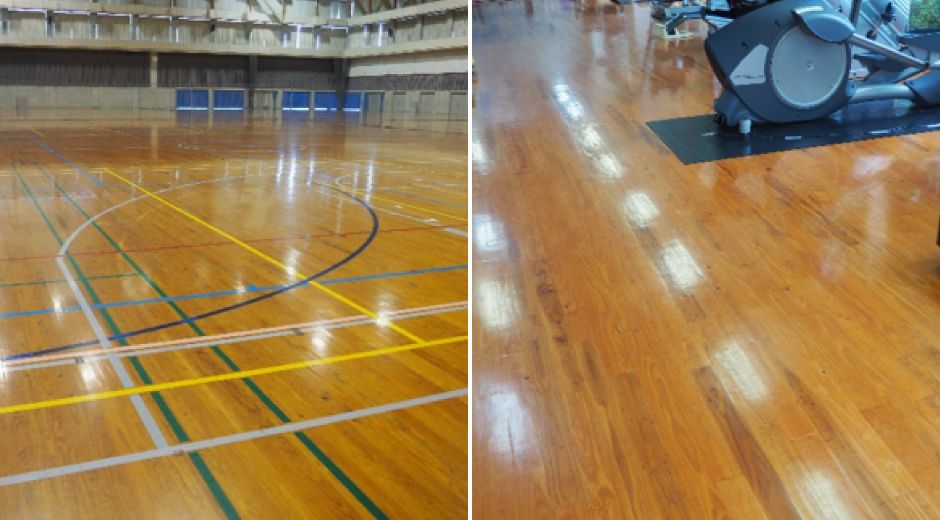
Using compressed cedar as a surface material creates the feeling of cedar on the surface. This is different from using 100% cedar increasing wear strength and reducing cost by half. Increasing strength allows even sports that put significant load on the floor such as wheelchair basketball.
In addition, we found that OPT can be used on a cell-by-cell basis. OPT can be fully utilized.
Wooden Products
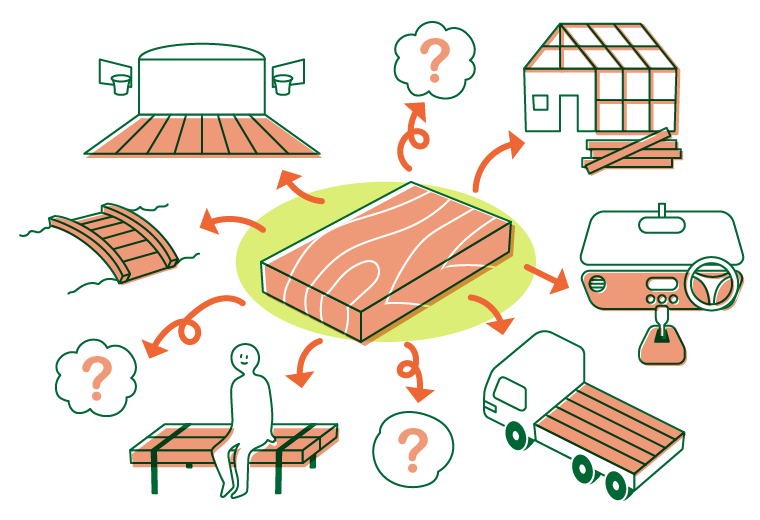
Vascular bundles
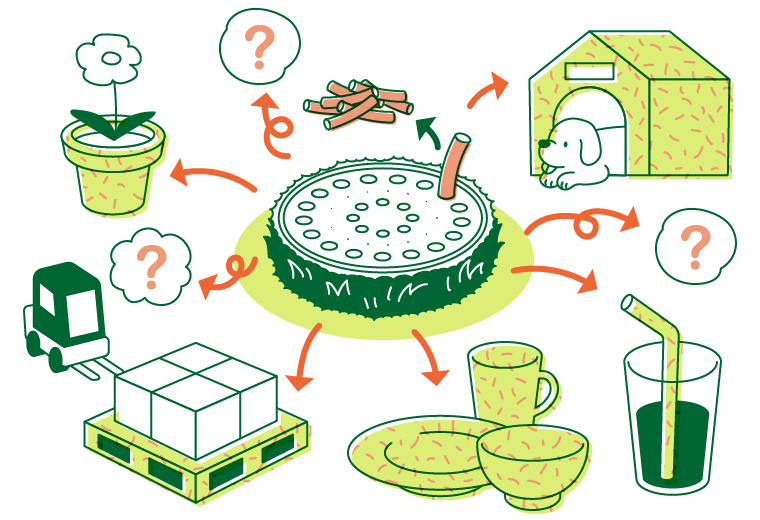
Parenchyma
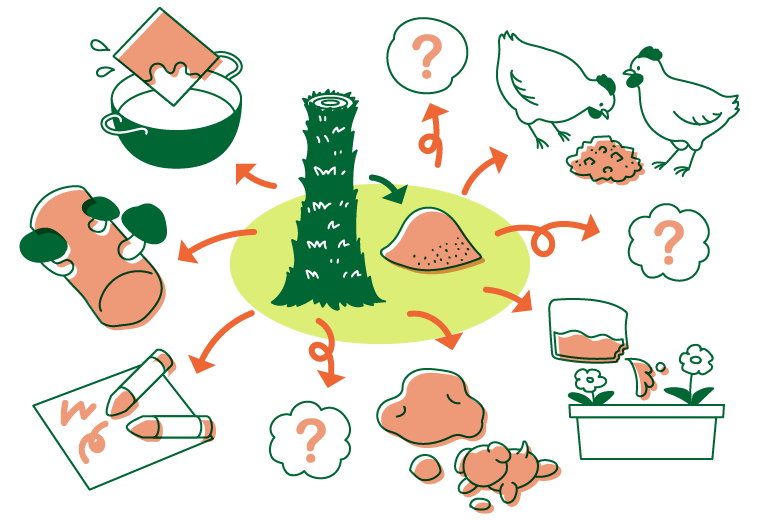
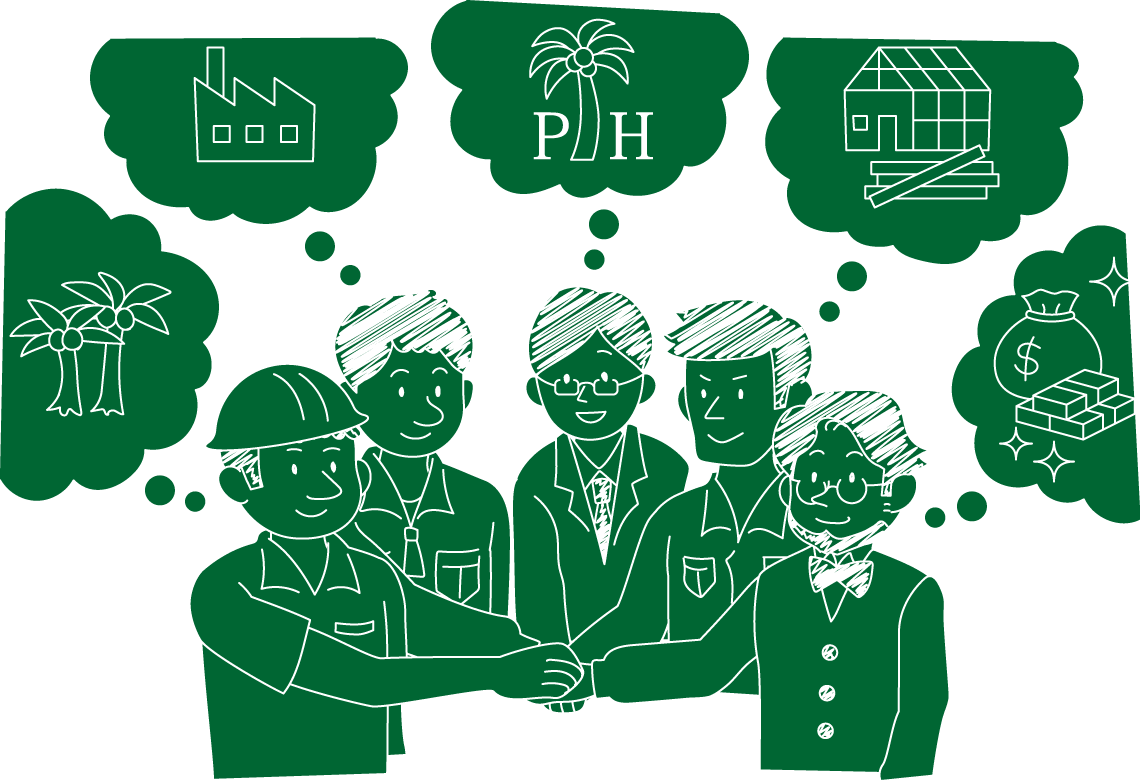
We have been conducting research and development on the utilization of OPT for
years, establishing wooden product processing technology, utilizing vascular bundles, utilizing parenchyma and transforming OPT into a valuable resource. We succeeded in doing so.
Therefore, in order to develop the utilization of OPT as a business, secure a stable supply route of OPT, support mass production of OPT wooden products, research and development of manufacturing using OPT, and products using OPT. We are proposing commercialization to a Malaysian partner company that is struggling to utilize OPT because palm oil production is thriving for the purpose of sales.
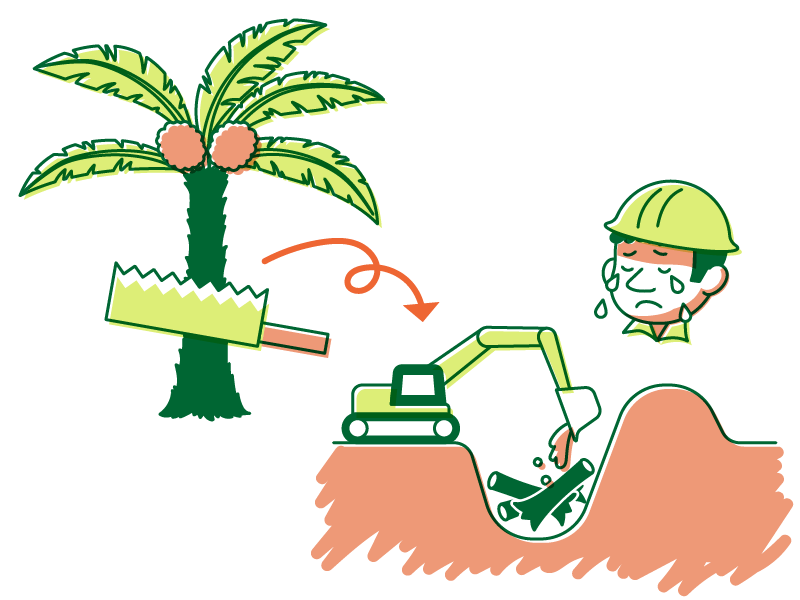
Cedar is light and soft and occupies most of Japanese forest, but its use is limited due to light, soft and low strength. So the wood research company Mywood Co., Ltd., the predecessor of Team Palmholz, was established. So far, it had received a total investment of more than 1.2 billion yen from Japanese government agencies and have succeeded in developing cedar compression.
This was sent to the market as an excellent building material with high wear resistance, and has gained a market enough to be continuously used as an indispensable building material in the construction industry.
One day, Fukuyama, one of founder (founder) of Palmholz Co., Ltd., saw the news on TV. OPT, which may be a high-quality material with fewer nodes than cedar, becomes a good resource in Japan and can be used as an unused resource.Succeeded in cedar for the first time in Japan by seeing OPT that could become an unfilled resource and telling Malaysia the compression technology that supports the Japanese building industry I began to think that my business could be applied to Malaysian OPT.
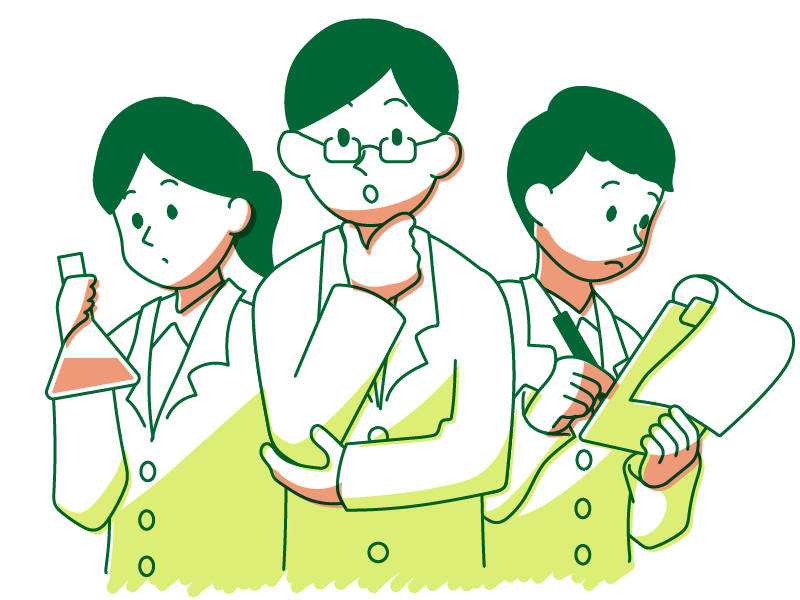
Shortly after consulting with a university professor in Indonesia, Fukuyama started research on applying compression technology to OPT with experts from the team “Mywood Co., Ltd.” who was involved in the development of compression technology in cedar.
Palm oil from oil palm is the most used edible vegetable oil in the world. Oil palm planting area is 6.5 million ha in Malaysia and twice as large in Indonesia as OPT, which is an unused resource I thought it would be a very useful resource if I could use it.
years later, as a result of long-term research and development and collection of local information on Indonesia, Malaysia, Colombia, Nigeria, etc.
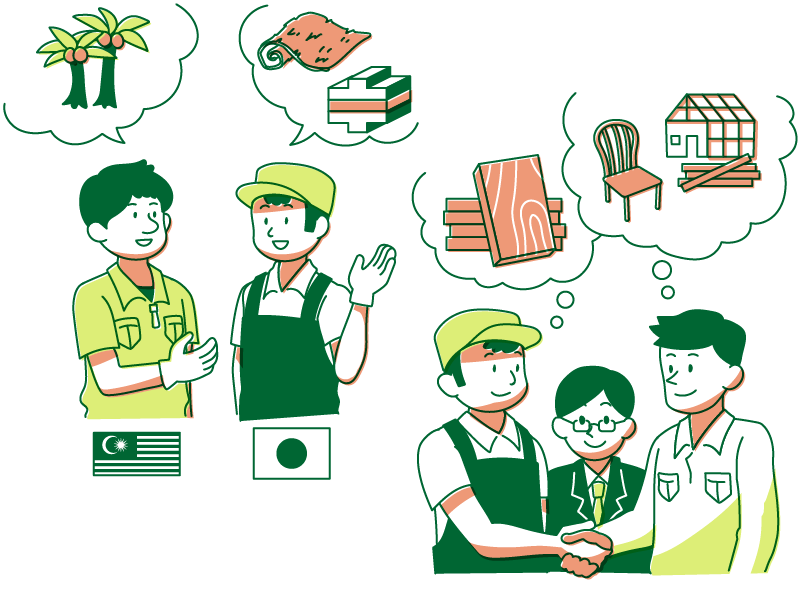
Now that the manufacturing technology has been established, the team "Palm Holtz" has finally reached the stage of commercialization in Malaysia.
However, launching the world's first big business, which can be said to be an innovation in oil palm plantations and the timber industry, in a foreign land of Malaysia cannot be easily achieved by a Japanese company, and the government agencies of both countries Collaboration with many companies is indispensable.
Therefore, the team "Palm Holtz" is Malaysian Industrial Development Authority (MIDA), Malaysian Timber Industry Board (MTIB), Malaysian Palm Oil Board(MPOB) With the support of , while meeting local companies, learning from each other, and overcoming challenges,using Malaysia's unused resources to bring about technological innovation in oil palm plantations and the timber industry, many SDGs I thought about doing a business that would contribute to the goal of Malaysia and also be an ESG investment.
By revitalizing the Malaysian timber industry through mass production of OPT compressed materials and utilizing unused resources (OPT), both Japanese and Malaysian companies will have a profitable WIN-WIN relationship, and in the process, they will start a new business. Raise and create employment opportunities in rural areas, grow the economy, and implement many SDGs issues such as poverty reduction and environmental conservation measures.
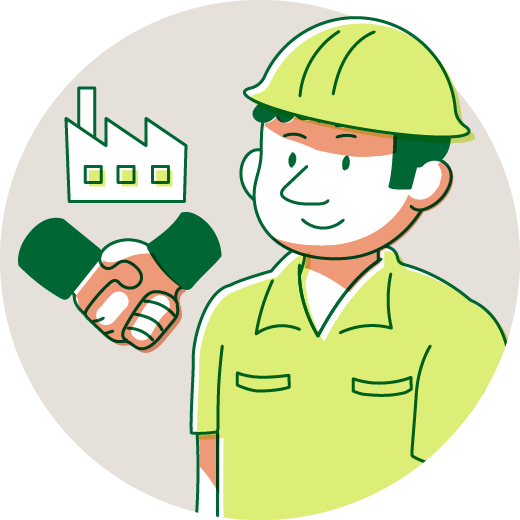
To create business applications of OPT, it is necessary to take efforts to ensure consistent supplies of large amounts of OPT. That is why we are recruiting oil palm farmers that can partner with wood working companies with an interest in developing applications for unused OPT resources.
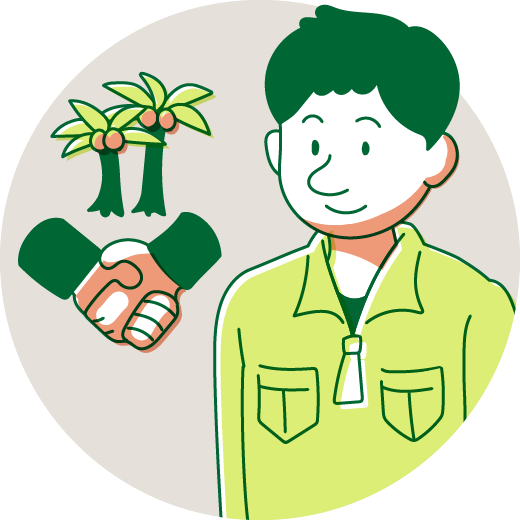
OPT has lots of starches and sugars so rot sets in unless treated within 24 hours of harvesting causing a loss of value as a resource. That is why we recruit plywood manufacturer that can form partnerships with oil palm farmers. We provide the necessary systemization for high value-added wooden product manufacturing technology and production.
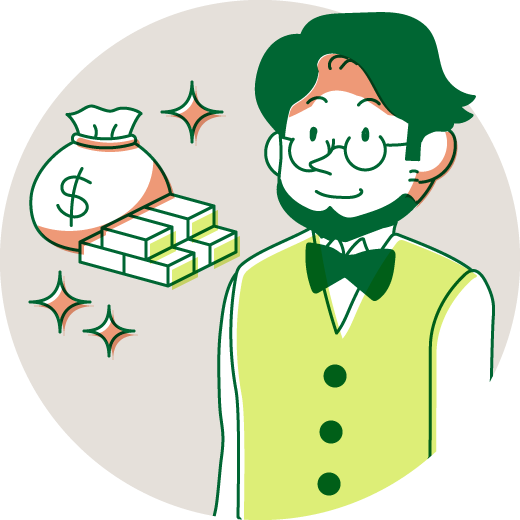
Research and development for business applications and effective use of OPT requires funds.
That is why we recruit investors able to perform ESG investment and interested in projects contributing to achieving OPT applications, environmental conservation, and SDGs.
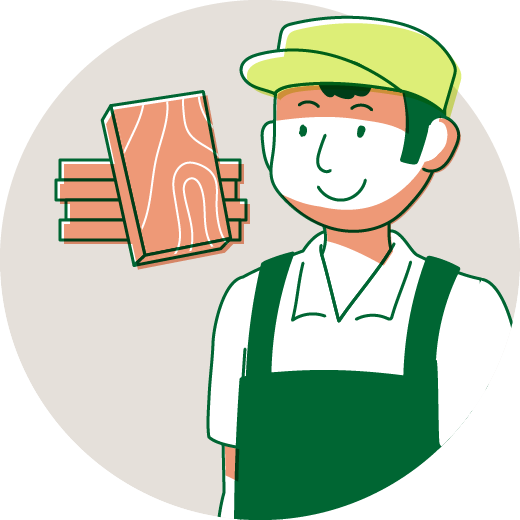
We are able to make OPT wooden products with different strength and treatment method depending on application due to research and development in OPT high value-added wooden product technologies and pass it on to Malaysian wood treatment companies, but we lack experience in mass production.
That is why we are looking for companies holding wooden product mass production technologies that can support local mass production.
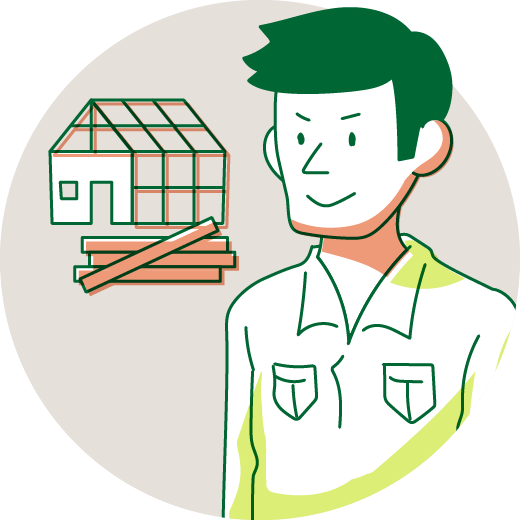
OPT complex material is a natural wooden product that retains the feeling of the wood even when used as a core bonded with a surface of a cultivated tree such as cedar or acacia.
That is why we are looking for companies interested in product creation and sales using wooden products.
In addition to use of OPT for wooden products, it can be used for a variety of applications including as a material for promoting reductions in plastics, as animal feed and as a mushroom bed for cultivating.
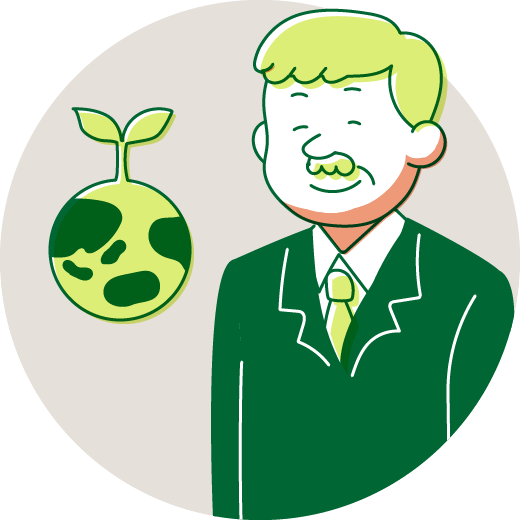
OPT complex material is a wooden product that is environmentally friendly, using no chemical substances in its preparation. Construction involves use of metal such as steel or screws.
We are looking to develop processes including construction that use completely naturally sourced materials.
We are looking for companies that perform construction with natural materials.
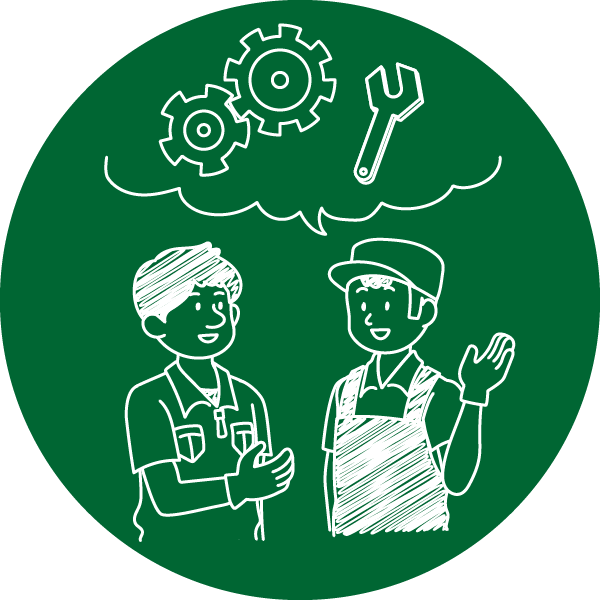
Technical transfer of compression technology to Malaysian companies and joint ventures
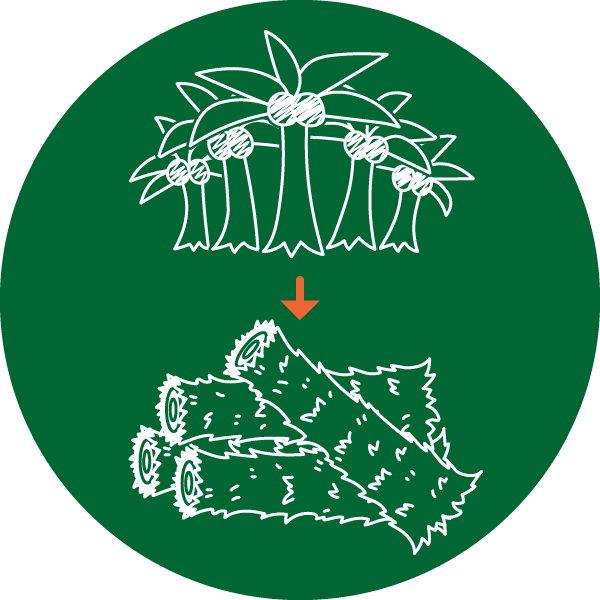
Procuring stable raw materials from the oil palm plantation
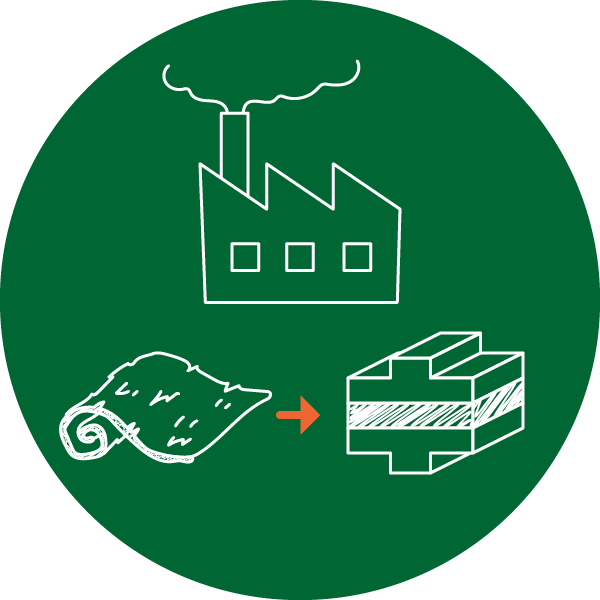
Establish a mass production system and quality control system for factories that perform compression processing
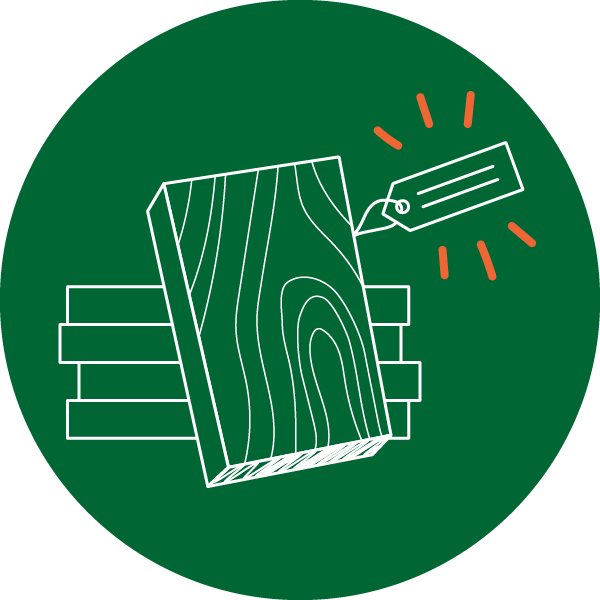
Establish a sales system for OPT consolidated board materials
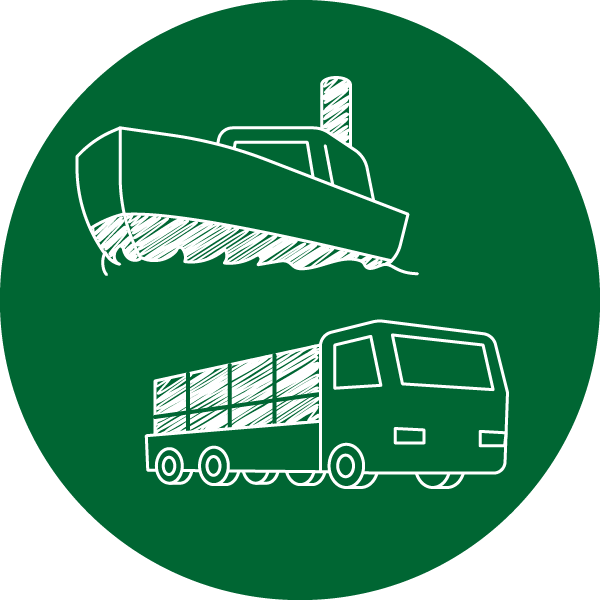
Establishing a logistics system that is necessary in every part of the production process
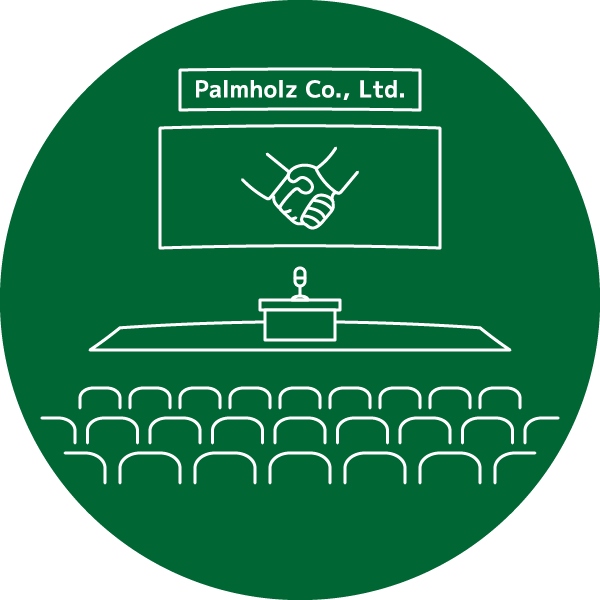
Holding forums to strengthen collaboration between related companies and explore new paths
| team name | TEAM Palmholz |
|---|---|
| leader | Ryotaro Hibino, Representative Director(Palmholz Co.,Ltd), director FUKUYAMA Masao(Palmholz Co.,Ltd) |
| Address | 2-63 Matsumoto-cho, Inuyama City, Aichi Prefecture 484-0086 |
| Member |
random order / One case |
| Registered patent |
|

